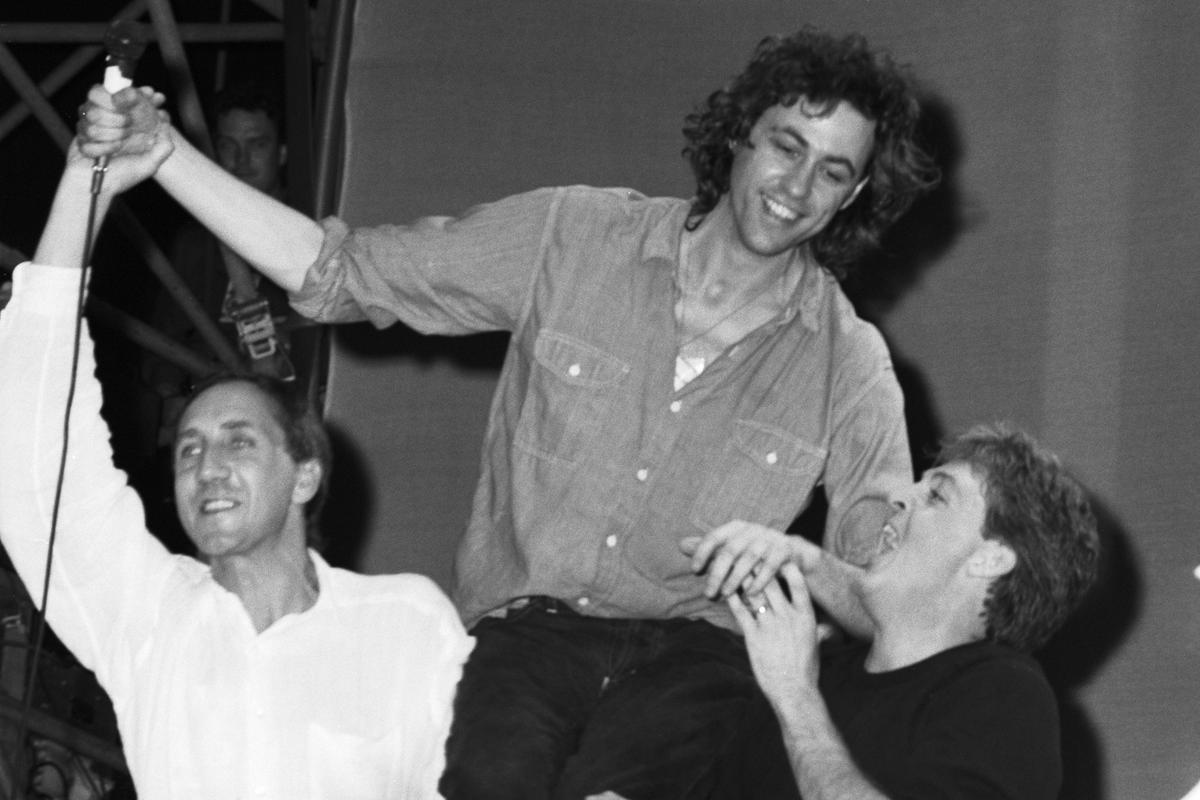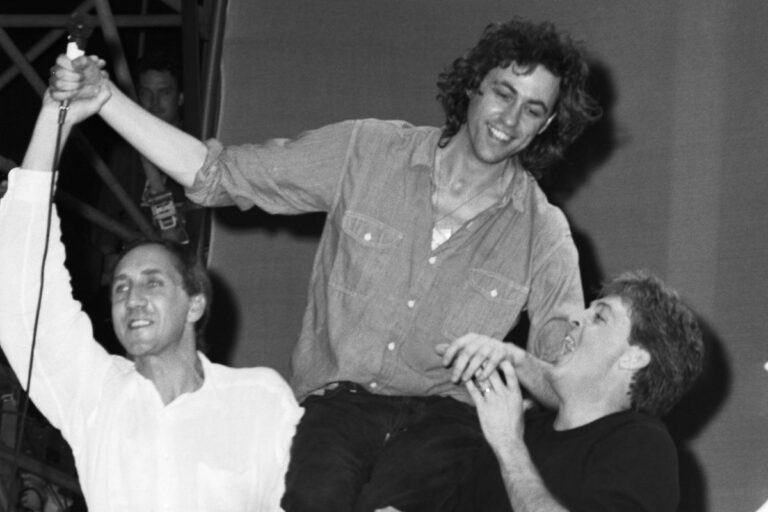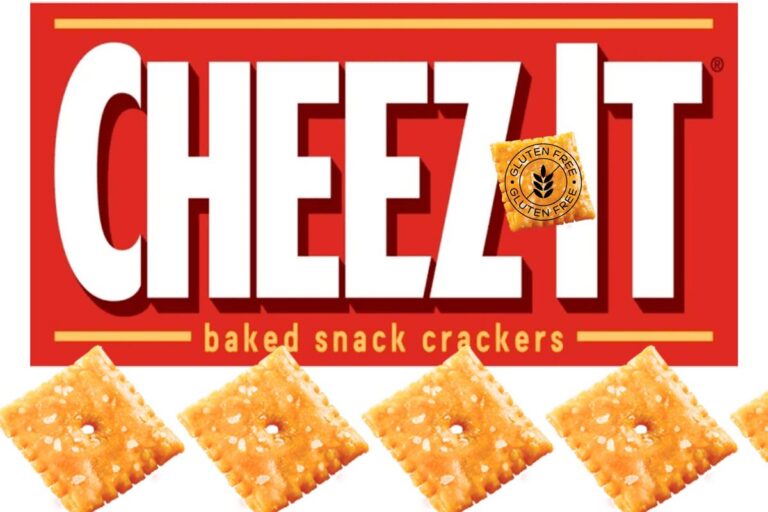Rest assured there were a great many memorable moments for Bob Geldof during the Live Aid concert 40 years ago at London’s Wembley Stadium 40.
But singing on stage with Paul McCartney — and then being hoisted onto his and Pete Townshend‘s shoulders afterwards — ranks pretty high on the list.
It was the culmination of a great deal of work on Geldof’s part — with McCartney as well as with Live Aid as a whole. “Remember this — it wasn’t easy for Paul McCartney,” Geldof tell UCR via Zoom recently from France. “He hadn’t played since John (Lennon) died (in 1980).”
In fact, it was McCartney’s first public performance in more than five and a half years, since the Concerts for the People of Kampuchea during December of 1979, also in London. McCartney was arrested in Japan the following month for marijuana possession, scuttling a planned Wings tour there and effectively bringing the band to an end.
During the planning of Live Aid Geldof had reached out to McCartney via a variety of emissaries; in his memoir, Is This It?, he writes about sending a letter to McCartney asking him to come and perform the Beatles’ “Let It Be” on the day: “I asked him if he would do it at the end of the show; ‘If you do it, the world will cry’…I knew he must get a hundred requests to do things, but I really felt like the program would not be complete without him there. I was not writing to Paul McCartney, the man, I said, but to PAUL MCCARTNEY, the phenomenon. If he played millions would watch who would not otherwise watch. That would mean money would not come in that would not otherwise come in…As I sealed the letter, I knew I could do no more.”
Read More: Live Aid’s 40 Best Moments
“The expectations for any Beatles are just too much,” Geldof acknowledges now. “Linda (McCartney’s first wife) and, I think, the kids, at the time young — Stella, Heather, Mary — I think they said, ‘You`ve got to do it!'” McCartney said yes, and even, according to Geldof, suggested Live Aid reach out to George Harrison and Ringo Starr to be part of it.
In the end it was just McCartney, however, though Geldof relates that, “he’s driving to London and he’s listening to the show (on the BBC), and — I know this ’cause I was told by Linda — he’s freaking out. He wants to turn back. ‘No…’
“There is a hierarchy in rock ‘n’ roll; the only people who don’t acknowledge it are the Rolling Stones (laughs), but other than that at the tip-top there’s these guys (the Beatles). So he goes on, one song, to give us the benediction, to give us the Beatles imprimatur, and of course it’s ‘Let It Be,’ which I had asked him to do.”
McCartney did not freak out — at least outwardly — when his microphone failed (reportedly because a stage tech accidentally kicked a cable and detached it). “I don’t care who you are; it’s very daunting, but you’re going to finish it,” Geldof says. That’s when the backing chorale took shape.
Watch Paul McCartney Perform ‘Let It Be’ at Live Aid
“The mic breaks down, and the next minute someone grabs my arm and says, ‘We`ve got to go help Paul’ — and this is Pete Townshend,” he recalls. “And I’m going, ‘What the f*** is happening here? This is the Who; I live, die and swear by this band, this man.’ And then my other hand is grabbed and, ‘Yeah, let’s do it,’ and it’s David Bowie! So It’s David Bowie, Paul McCartney, Pete Townshend and, in the middle, f***ing Bob Geldof, like…What?’ (Alison Moyet was also in the group.)
“And I walk out on stage, and it’s amazing. I don’t know if it felt as amazing at the moment as it does now. This is Bob Geldof from the Boomtown Rats, from Dun Laoghaire County, Ireland, you know? My bedroom wall has stepped down into my bedroom, come alive in front of the 12, 13-year-old, you know? Just, “What the…”
Being hoisted on McCartney and Townshend’s shoulders was entirely unexpected, and Geldof was ambivalent about it at first. As he writes in the memoir, “Please put me down. I really don’t want this, I remember thinking…But looking back, I am still embarrassed but intensely proud that I was carried on Paul McCartney’s and Pete Townshend’s shoulders.”
Bowie provided another surreal moment earlier in the day for Geldof, who was suffering intense back pain that a doctor diagnosed as a pinch nerve. “So I’m wandering around, and I have to stop and take five minutes, ’cause my back is f***ing killing me,” Geldof remembers.
“I lie on a flight case on my back and Bowie comes over — we’re talking about one of the greatest artists of the 20th century — and he says, ‘What’s wrong with you?’ I say, ‘My f***ing back is killing me. He says, ‘Turn over and I’ll massage it…’ I turn over and he’s massaging and says, ‘How’s that?’ I said, ‘No, f***ing down a bit, down a bit. For f***’s sake, I told you it’s down in my back.’ And he goes, ‘There?’ ‘No, not there, down a bit…ah, yeah, there Dave.’
So he’s doing that, he’s massaging me, and at that point Garry (Roberts), the guitar player in the (Boomtown) Rats, says, ‘What are you doing, Geldof?’ I said, ‘My back’s killing me.’ He says, ‘We’re on stage, come on!’ And I jumped up; in the film you can see me walking a bit like Robert Mitchum or John Wayne, with my arse sticking out like this ’cause my back’s hurting.”
Live Aid, which was held in London, Philadelphia and other locations in Europe, Australia and Japan was seen by an audience of nearly two billion in 169 countries that day and raised, according to Geldof, $140 million for the Band Aid Charitable Trust’s famine relief efforts. (Contributions for continuing work can be made to bandaidtrust.co.uk). Live Aid’s 40th anniversary will be celebrated on Sunday, July 13 with the premiere of the multi-part documentary, Live Aid: When Rock ‘n’ Roll Took on the World on CNN and the BBC.
Live Aid 1985 Photos
The day-long, two city concert brought the whole world together.
Gallery Credit: UCR Staff



